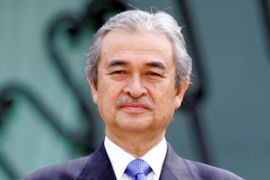Rio Tinto in Malaysia smelter deal
Move to locate aluminium plant in Sarawak criticised by environmental groups.

Commencement date
It will have an initial production capacity of 550,000 tonnes per year, rising eventually to 1.5 million tonnes.
Oscar Groeneveld, Rio Tinto Aluminium chief executive, said in a statement: “This is a very positive development for Rio Tinto Aluminum and an important step in our plans to develop new greenfield aluminium smelting capacity.”
He said that the project could provide nearly 5,000 direct and indirect jobs, as well as help boost Malaysia’s economy.
Goeneveld said: “CMS and Rio Tinto Aluminium are committed to develop the project to world-class environmental and community standards.”
Complementary experience
Jamalullail said that the project is seen as a “catalyst for the next phase of growth” in Sarawak, as the Malaysian government is developing as an industrial area sitting under vast energy resources of oil, natural gas and coal deposits.
Electricity for the smelter is expected to come from the Bakun hydroelectric dam.
The dam is currently under construction and has been strongly criticised because up to 10,000 tribal residents have been forced to relocate.
The $2.5bn dam project was approved in 1993.
Environmental degradation
Construction has involved the destruction of about 69,000 hectares of rainforests in Sarawak.
Much of its power output is to flow through undersea transmission lines in a programme to supply power to mainland Malaysia by 2010.
It has been delayed numerous times, and put on hold, but was revived two years ago.
Environmentalists have said that Rio Tinto’s plan to tap power from Bakun is a move to cover up the dam project’s failures.
Cover-up
Nicholas said: “Another big project like this will see more green forestry being wiped out and that itself is another disaster.”
Rio Tinto Aluminium is part of the Rio Tinto Group and owns mining, refining and smelting assets located mainly Australia and New Zealand.
The company is set to become the world’s largest aluminium producer through its recent $38.bn takeover of Alcan, a Canadian aluminium company.